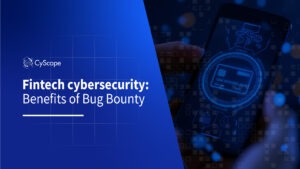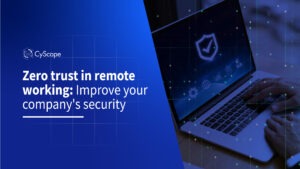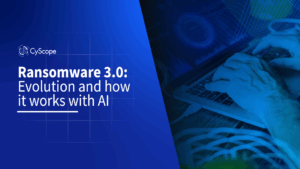What is PTaaS
PTaaS offers a new way of implementing the security practices of penetration testing within an environment. CyScope’s approach uniquely combines cutting-edge technologies, expert analysis, and a comprehensive understanding of evolving cyber threats. We recognize that traditional Penetration Testing, while effective, presents challenges in scalability and resource management. This is where our Pentest-as-a-Service (PTaaS) solution comes into play, offering both regular and one-time testing options, seamlessly scalable to meet your organization’s demands. Our team of security professionals, carefully vetted and expertly trained, ensures you have the confidence you need to protect your critical assets and reduce risks. With PTaaS, the process shifts to a service-based model, alleviating concerns about resource availability and skill levels, ultimately making it a more cost-efficient choice compared to maintaining an in-house penetration testing team.
By moving to a service-based model, PTaaS allows much more flexibility enabling organizations to tailor the level of pentesting they require to their specific risk profile and needs. However, PTaaS is not a plug-in-play solution but a proper program to implement. Successfully implementing PTaaS requires keeping a few critical elements in mind:
1 – Proper Scoping
2 – Choosing The Right Partner
Not all PTaaS providers are created equal, and choosing the right one that suits your organization’s long-term goals is essential. Many factors can influence if the provider is right or wrong for your environment. A few key factors to consider are:
- Does the provider have references available that they can provide?
- Do they share the methodology or tools they will be using?
- What are the skill levels of their community? Do they possess the relevant experience and certifications like Certified Ethical Hacker (CEH), Offensive Security Certified Professional (OSCP) etc.
- Does the provider work in your time zone? Working in different time zones can be significant when issues must be resolved.
- What is the security posture of the provider? If granted access to the organization’s environment, they should have robust security controls validated by certifications like ISO 27001, Global Industrial Cyber Security Professional (GICSP), Global Information Assurance Certification (GIAC) and Geographic Information Systems Professional (GISP), among others.
- What is the level of customization the provider offers? Can they accommodate changes to requirements in the future?
Organizations should create a scoring matrix based on their specific criteria and choose the provider based on the same
3 – Quality of Reporting
4 – Metrics and Monitoring
For continuous improvement, organizations should use performance and quality metrics to assess the effectiveness of the PTaaS service. A few key metrics that can be tracked are:
- Time taken for penetration tests to be set up and completed.
- Response time from the provider in case of questions or issues.
- Time taken to verify remediations.
- Vulnerabilities throughout 6 to 12 months. If the PTaaS service works, there should be a reduction over time.
- Time taken for new systems to be added to the scope.
5 – Moving Beyond Penetration Testing
A good PTaaS program will recognize that penetration testing forms just one piece of the security puzzle. The service should accommodate shifting left and doing security assessments much earlier in the life cycle, such as when infrastructure is being spun up or when applications are being developed. The more security shifts left, the fewer findings will emerge later.
Organizations should mature their PTaaS programs over time and find ways to incorporate this service into their DevOps pipelines and training programs to develop an overall security culture.
The Way Forward
PTaaS can be a game-changer for many organizations but requires proper planning and implementation. By investing in a PTaaS program and focusing on the highlighted strategies, organizations can set themselves up for long-term security success. The CyScope team boasts a diverse array of language skills and comprises individuals from around the globe, rendering it an exceptionally skilled and adaptable community. Each member undergoes rigorous vetting and meticulous legal procedures before becoming part of our community. Furthermore, CyScope’s operational team delivers ongoing assistance, guidance, and strategic counsel to ensure that you maximize the platform’s capabilities and achieve optimal results. As environments become increasingly complex, a PTaaS is no longer a good-to-have but an absolute necessity for a robust cybersecurity posture.





